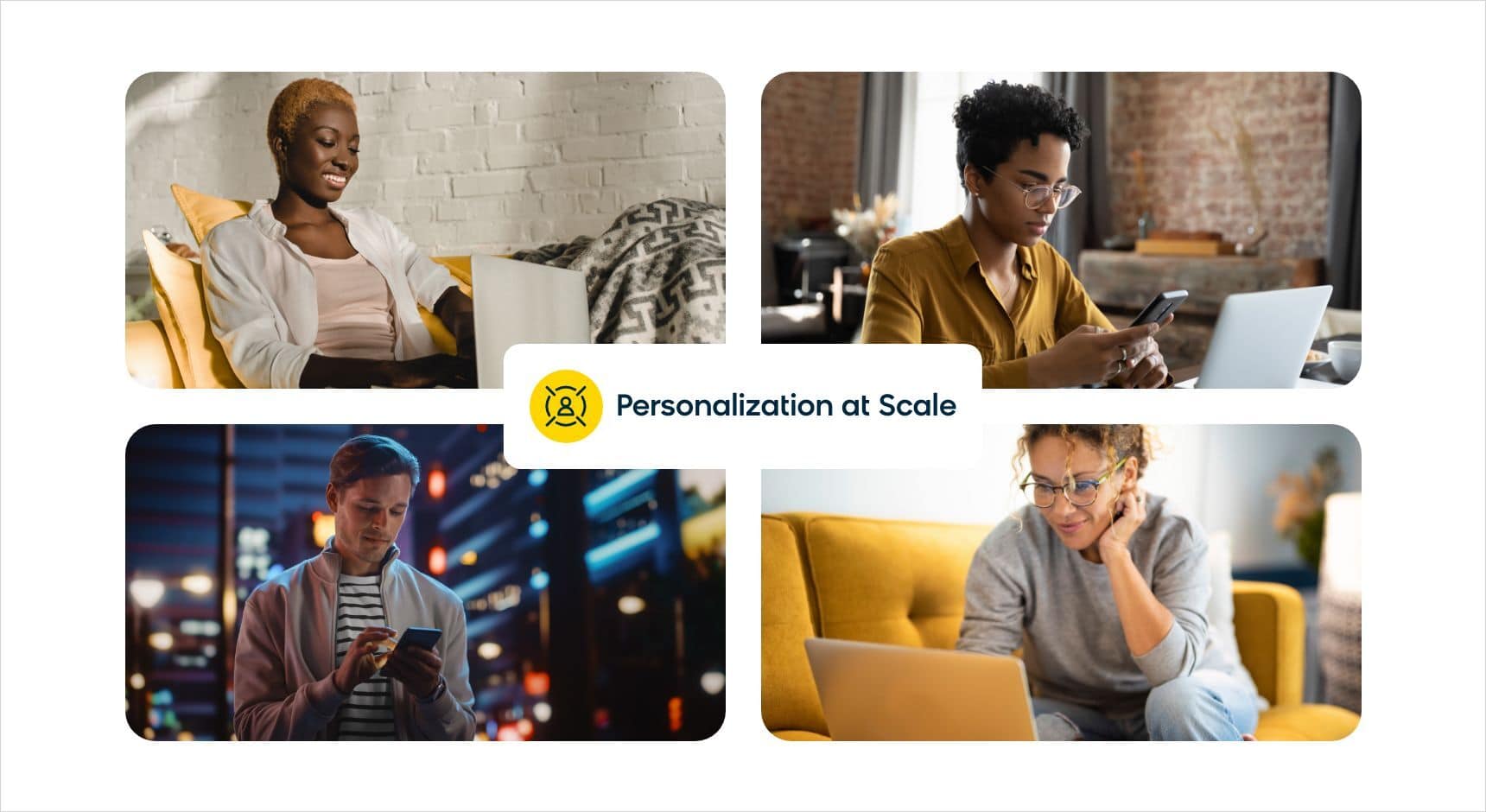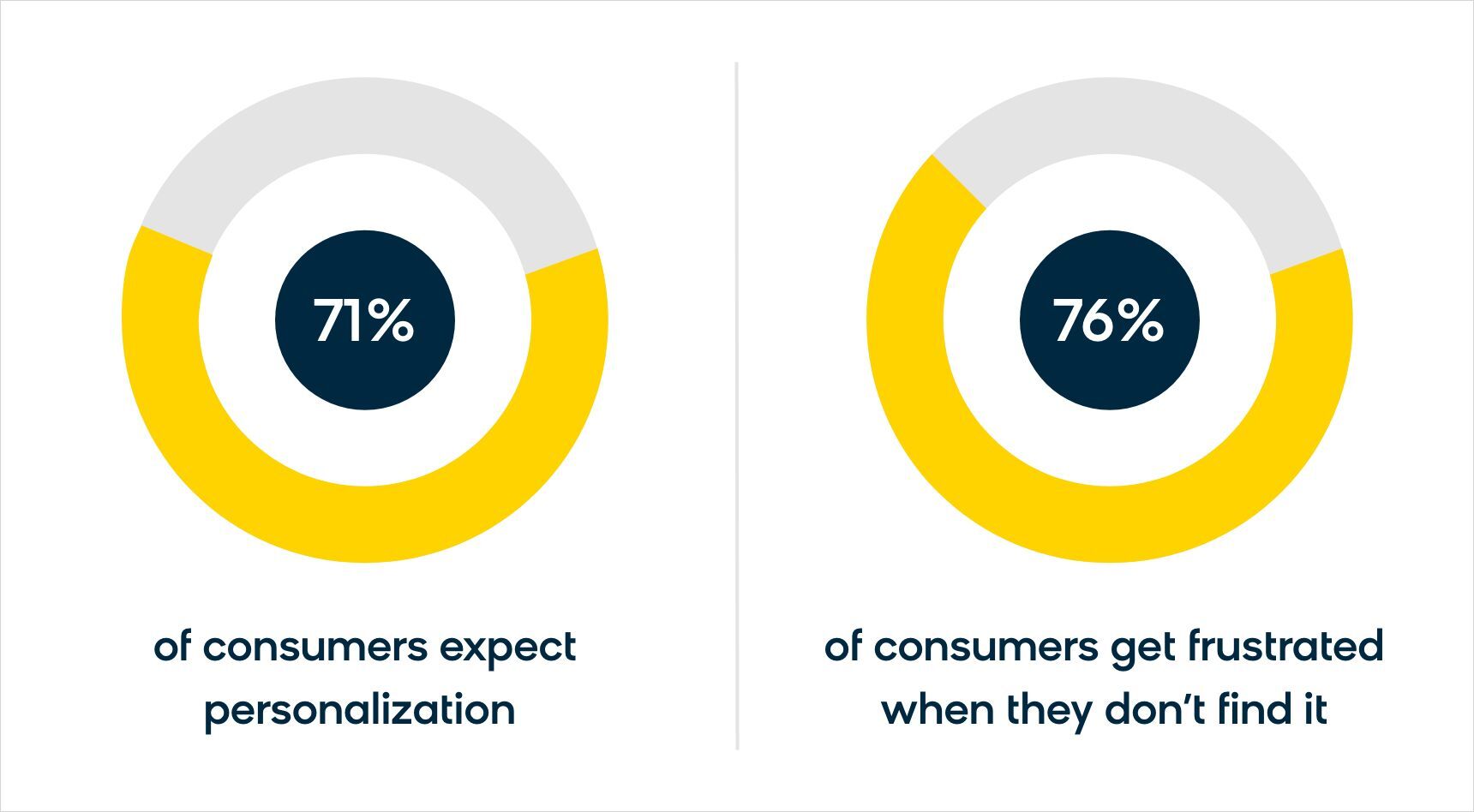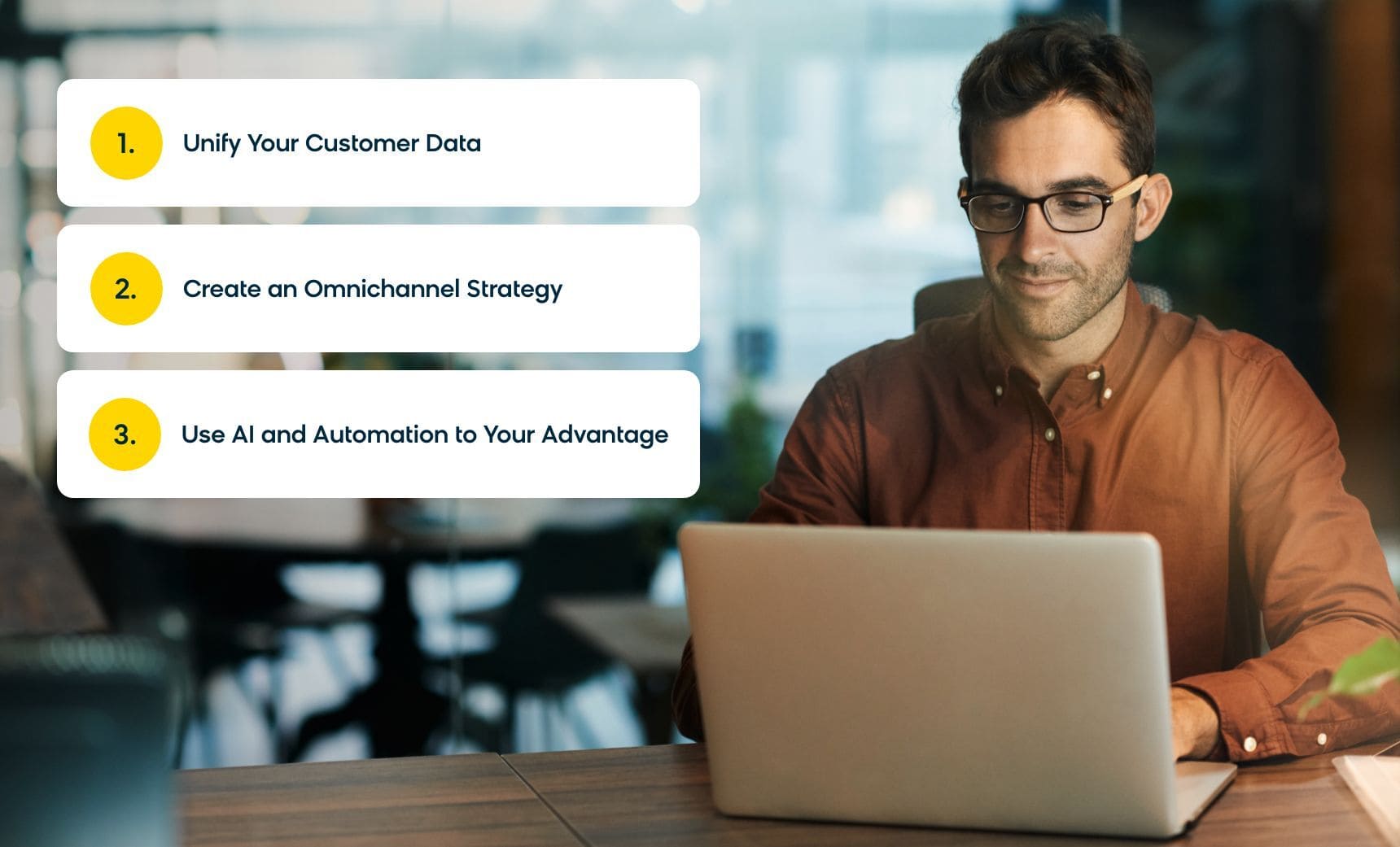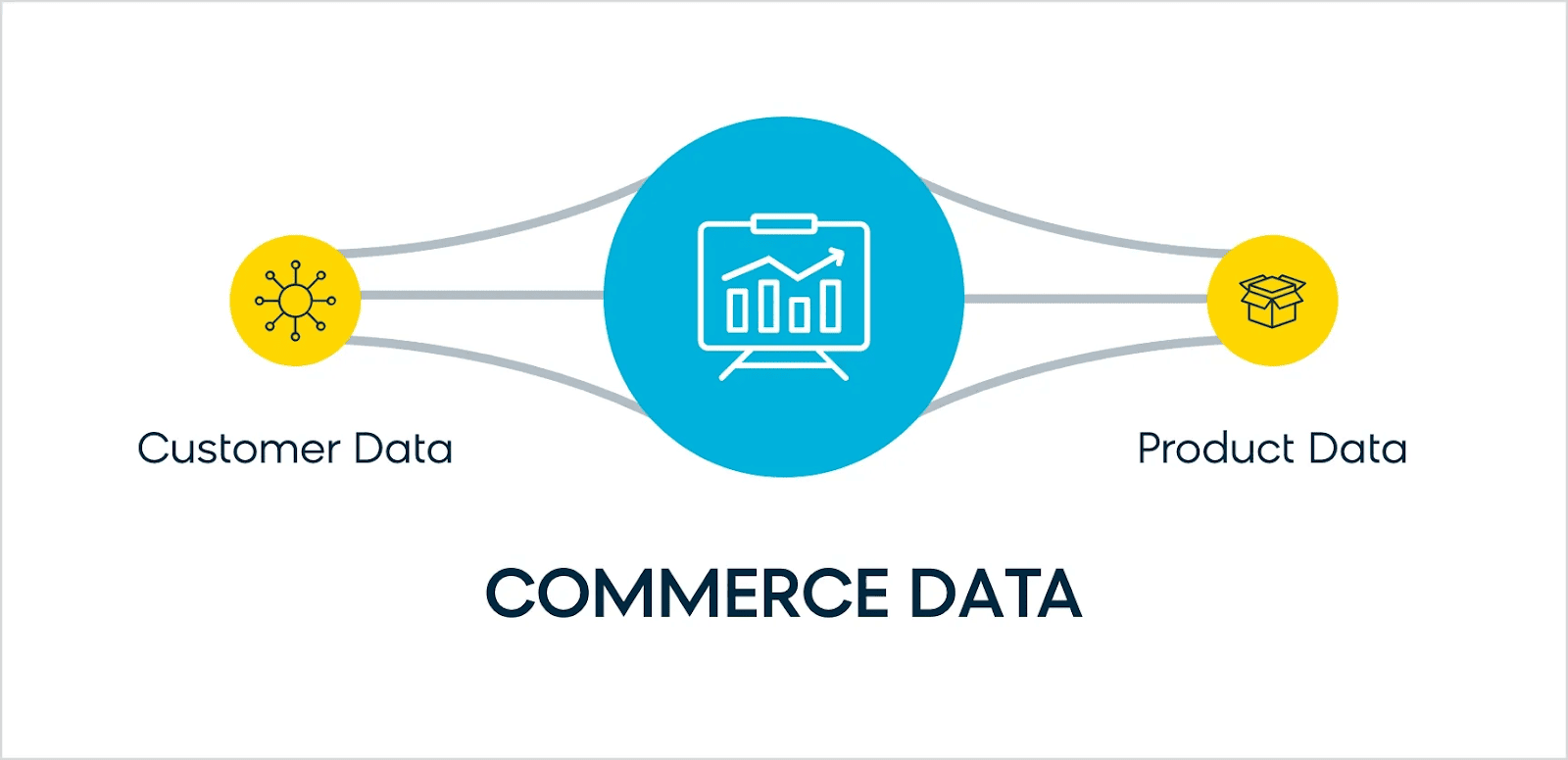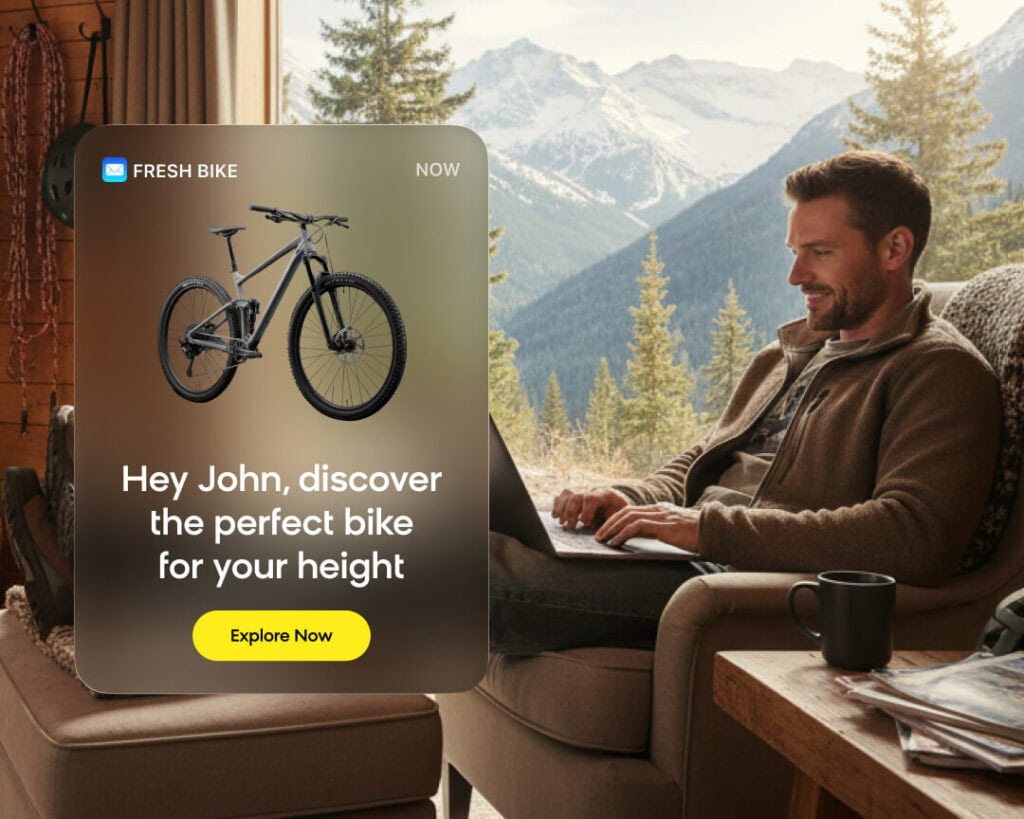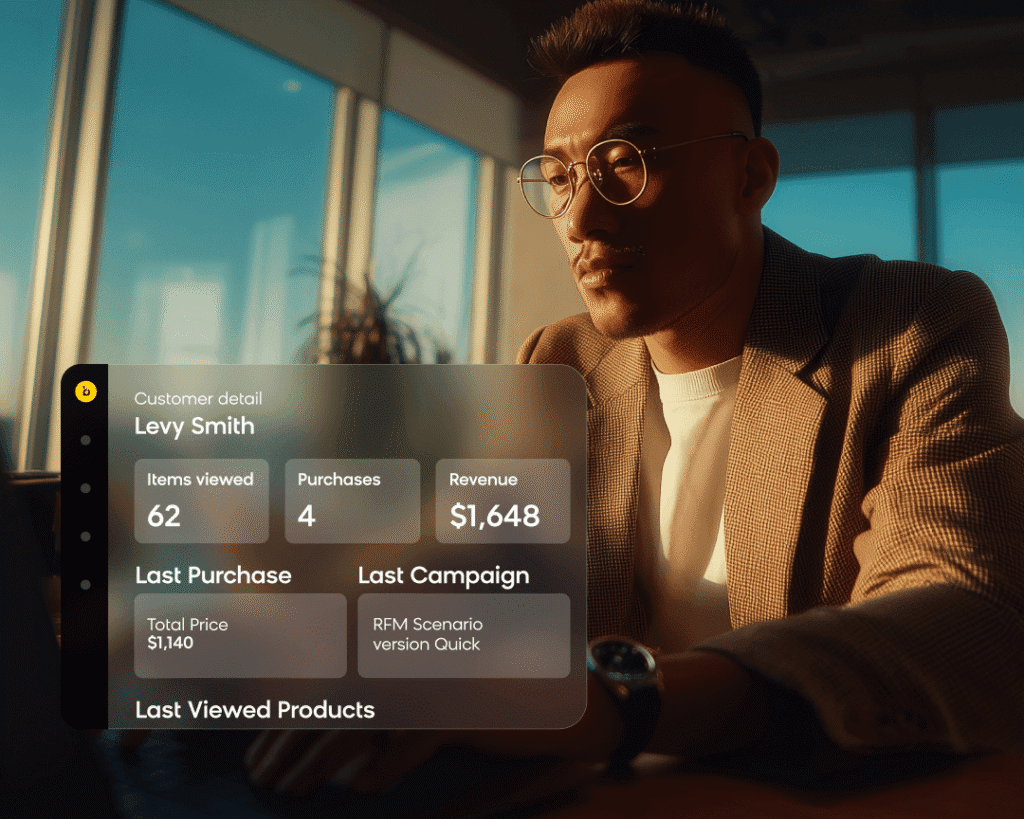By 2023, the global revenue of customer experience personalization and optimization software is expected to surpass 9 billion US dollars, according to Statista. Businesses are spending more than half of their marketing budgets on personalization today.
While personalization is not new — it’s been around for many years — a lot of companies have failed in their efforts to go beyond personalization at the segment level or in using the most basic forms (like name-based marketing messages).
The struggle lies with scaling personalization across all the different ways you engage with your customers. Done right, personalized marketing is the route to higher customer engagement, revenue, and ROI.
In this article, we’ll show that personalization at scale is a powerful tool in the marketer’s toolbox and not simply a pipe dream. Let’s dive in.
What Is Personalization at Scale?
Personalization at scale refers to analyzing large amounts of data about individual users to deliver highly relevant customer experiences that are tailored to their specific needs, behaviors, and preferences.
For example, in entertainment, streaming platforms like Netflix and Spotify analyze the viewing history of users to understand their preferences and recommend new content. In healthcare and wellness, data from wearable devices is used to provide recommendations for nutrition and exercise.
One of the most common forms of personalization at scale lies within ecommerce and marketing.
Ecommerce personalization spans cross-channel, on-site, and in-app. It encompasses anonymous, first-time, and existing customers, and includes personalized messages, content, site layouts, products, and much more. It is driven by real-time, first-party data. This results in measurable journeys that engage and lead shoppers through brand awareness to product discovery to repeat purchases.
Personalization at scale, therefore, comes in many different forms and spans a variety of channels. It’s not only about providing personalized digital experiences (through product pages that push personalized recommendations to the top of the results), but it can also come to life as cart abandonment emails in a lifecycle marketing campaign or as onboarding quizzes that showcase relevant items to consumers.
What Are the Benefits of Scaling Your Personalization Strategy?
Why does all of this even matter? Let’s take a look at some of the rewards to reap when you prioritize a personalization strategy.
It’s What Customers Expect
Hate to break it to you, but these days, but a simple “Hi, {{${first_name}}}” will no longer meet customer expectations. McKinsey’s Next in Personalization 2021 Report revealed that 76% of consumers get frustrated when they can’t find what they’re looking for. In a study of the most wanted ecommerce innovations in 2022 by generational cohort, personalized services were the third-most sought-after ecommerce feature among all cohorts.
This is because, in a world of information overload and instant gratification, the last thing users want — whether that’s Gen Z, Gen Y, or Boomers we’re talking about — is irrelevant marketing messages that are off-target or disconnected from their overall experience with your brand. Relevancy and a connected customer experience are key, and personalization at scale helps to address this.
When companies deliver a personalized experience that’s fine-tuned to and even anticipates customer expectations and needs, people feel understood and valued. This translates to increased customer engagement and satisfaction which in turn translates further into results that benefit your business.
It Improves Retention and Loyalty
When customers feel understood and valued as a result of personalized experiences, this leads to higher engagement and loyalty.
Not only can personalization improve the customer experience and increase customer loyalty, but it can also result in generating positive word-of-mouth. Who doesn’t love a Spotify Wrapped campaign — questionable song choices aside — or a Peloton class that caters to your unique fitness goals?
The same McKinsey report found that 78% of consumers are more likely to make repeat purchases and to refer family and friends to companies that personalize experiences.
Customers often feel compelled to share the positive experiences they’ve had with your brand as a result of your personalization strategy. It can be the difference between you standing out or your competitor getting there first.
What’s more, brands that prioritize scaling their personalization create a more connected and hyper-personalized customer experience.
Hyper-personalization refers to leveraging AI, machine learning, and real-time commerce data (the combination of customer and product data) to deliver more relevant products and services to your audience and offer an optimal experience for them on a single channel. This means that no two people will have the same experience with your brand.
Holistic personalization goes one step further and is really what we mean when we talk about personalization at scale. Holistic personalization strategies help to complete the commerce experience across every touchpoint.
To illustrate this in action, Bloomreach customer Sofology connects offline and online commerce data to personalize and optimize the furniture purchasing experience it provides to customers. Being able to connect data collected from in-store visits and even data collected from call center interactions helps to better personalize the customer experience for interested visitors and repeat customers – and differentiates the Sofology brand from other competitors in the market.
What’s not to love about holistic and hyper-personalized experiences where a brand can anticipate your every need at the right moment? That is exactly what personalization at scale can do.
It’s Good for the Bottom Line
Personalized experiences can lead to higher conversion rates as customers are more likely to take action when a product or service is tailored to their specific needs.
This will eventually impact your revenue goals. According to McKinsey, companies that grow faster drive 40% more of their revenue from personalization than slower-growing counterparts. By engaging customers more effectively, nurturing them in their purchase journey, and converting more leads into sales, businesses can see an increase in revenue as a result of scaling personalization.
By scaling personalization, you can acquire more data on how people interact with your products or services, leading to better future product and marketing decisions, as well as a greater competitive advantage.
With this advanced understanding, more tailored experiences that delight your shoppers will ultimately lead to more purchases, resulting in an uptick in the metrics that matter like average order volume, repeat purchases, and customer lifetime value. A study by Boston Consulting Group and Google on the impact of personalization on retail, for example, showed that 40% of consumers are more likely to spend more than planned when experiences are highly personalized.
How Can Marketers Personalize at Scale?
Is all of this easier said than done? Against a backdrop of changing consumer behaviors, privacy laws, and targeting constraints, is personalized marketing becoming more complex and out of reach?
Thankfully, there are a wealth of tools, technologies, and strategies to help you get there.
In order to scale personalization effectively, marketers need to have a solid understanding of their customers and the right technology to support them. More than that, developing the right processes and practices can help companies transform and realize their full potential.
1. Unify Your Customer Data
First, in order to truly understand your customers, marketers need to unify customer data sources in real time. Many organizations try to get by with disconnected point solutions, but this results in them not having the right data when they need it, making it incredibly challenging to scale strategy and personalization. Here are a few tips to help you get real value out of your data.
Single Customer View
A single customer view is a database with customer profiles (showing purchase history, site activity, product recommendations, and other customer interactions) for every individual that has taken any action with your business, providing you with a complete view of your customers and also allowing you to create more targeted audience segments. Without a single customer view, truly personalized experiences are next to impossible.
Commerce Data
But only having data on your customers’ behavior and purchase history will only get you so far. Ecommerce personalization will be incomplete without the combination of both customer and product data, which is what we refer to as commerce data. For example, if you know a shopper’s dress size (customer data) and combine this with information about a specific type of dress available on a category page (product data), you can serve this dress as a product recommendation and increase your bottom line.
Commerce data is the fuel that allows you to scale personalization across your customer journeys.
Customer Data Engine
So, unifying your consumer data and the winning combination of commerce data is what fuels personalization at scale. But how do you actually do this? The data needs to be activated for your personalization strategies to flourish. Thanks to technology like Bloomreach, you can use a customer data engine to unify your data and power your omnichannel orchestration and personalization efforts.
Alternatively, if you already have data infrastructure in place, you can plug Bloomreach into your existing system such as a CDP, data lake, or data warehouse, and watch your personalization pursuits come to life.
2. Create an Omnichannel Strategy
In order to deliver truly personalized marketing consistently across all touchpoints, you’ll need to orchestrate omnichannel workflows with a platform that can integrate all marketing channels.
With an omnichannel strategy in place, you can tailor your customer journeys based on real-time triggers, customer segments, conditions, and integrated marketing channels (including email and SMS) to share personalized offers that convert.
3. Use AI and Automation to Your Advantage
Marketing automation in ecommerce allows you to replace manual marketing tasks with software that uses AI capabilities to monitor and manage repetitive workflows like lead management, retargeting, and personalized content across multiple channels such as email, web, mobile, in-app, and more.
It has some clear advantages, including personalizing marketing campaigns without the need for technical support and engaging shoppers with real-time triggers at various points in the customer journey. The role of artificial intelligence and machine learning is to determine the best time and channel to trigger these messages and further optimize the experience, resulting in higher customer engagement and delightful customer experiences.
To illustrate how marketing automation works in practice, take a look at the following examples:
- Automated welcome series: Marketing automation allows you to tailor your onboarding experience for prospects and new customers with highly targeted and personalized welcome emails. Brands like Brewdog, for instance, use automated welcome series to increase conversions and revenue.
- Product recommendations: 1:1 product recommendations provide relevant suggestions for products and inspire your shoppers to make additional purchases across all the different touchpoints they might interact with. There are different types of product recommendations, including top-seller recommendations, rating-based recommendations, and cross-sell recommendations — all designed to keep your customers coming back for more.
Examples of Personalization at Scale
You’ve discovered what personalization at scale means. You’ve learned about the benefits and all the ways you can put it into action. But what does this really look like in practice? Find inspiration from these market-leading brands.
Yves Rocher Drives More Engagement With Real-time Personalization
Yves Rocher took advantage of personalized product recommendations powered by Bloomreach and saw several incredible results.
The cosmetics and beauty brand was able to deliver on-site product recommendations within 0.1s of customer action, leading to a 17.5x increase in clicks on a recommended item and an 11x increase in purchase rate.
Yves Rocher can now deliver much faster product recommendations in real time (or within 0.1 seconds, to be exact), resulting in what feels like magically personalized experiences for its customers.
RoadLords Activates Its Mobile Customer Base
RoadLords’ goal is to develop a community-driven truck navigation system by encouraging drivers to interact within its native app environment and create more user-generated content — including road incident reports and points of interest — to enrich maps.
RoadLords began using Bloomreach Engagement’s in-app messages to display personalized content to active users within its mobile app — the perfect way to engage and retain their best customers.
In-app messaging also helped to facilitate a net promoter score campaign. This resulted in 11% of RoadLords’ user base engaged with the NPS campaign that was implemented using in-app messages.
Jenson USA Uses Personalization To Boost RPV
Jenson USA’s goal was to scale its personalization efforts by concentrating on the differences between its various customer segments.
Thanks to Bloomreach Engagement, the online bike retailer could set up custom segmentation that updates based on in-session user behavior. When this segmentation was integrated with Bloomreach’s powerful search engine, the engine understood the difference between customer segments at the level of products they were interested in.
The results? An 8.5% improvement in revenue per visitor (RPV) and a 26% increase in RPV on mobile.
For more success stories that showcase Bloormeach’s impact in action, visit our case studies hub.
Easily Scale Your Personalization With Bloomreach
At Bloomreach, we pride ourselves on making personalization at scale simple and actionable for marketers and other key stakeholders. We do this with Bloomreach Engagement, a powerful combination of unified commerce data and marketing automation, which you can activate across 13 channels in real time for true personalization.
Ready to scale your personalized marketing and get more value from your marketing efforts? Learn more about how Bloomreach Engagement can drive top-line revenue as part of your martech stack.


